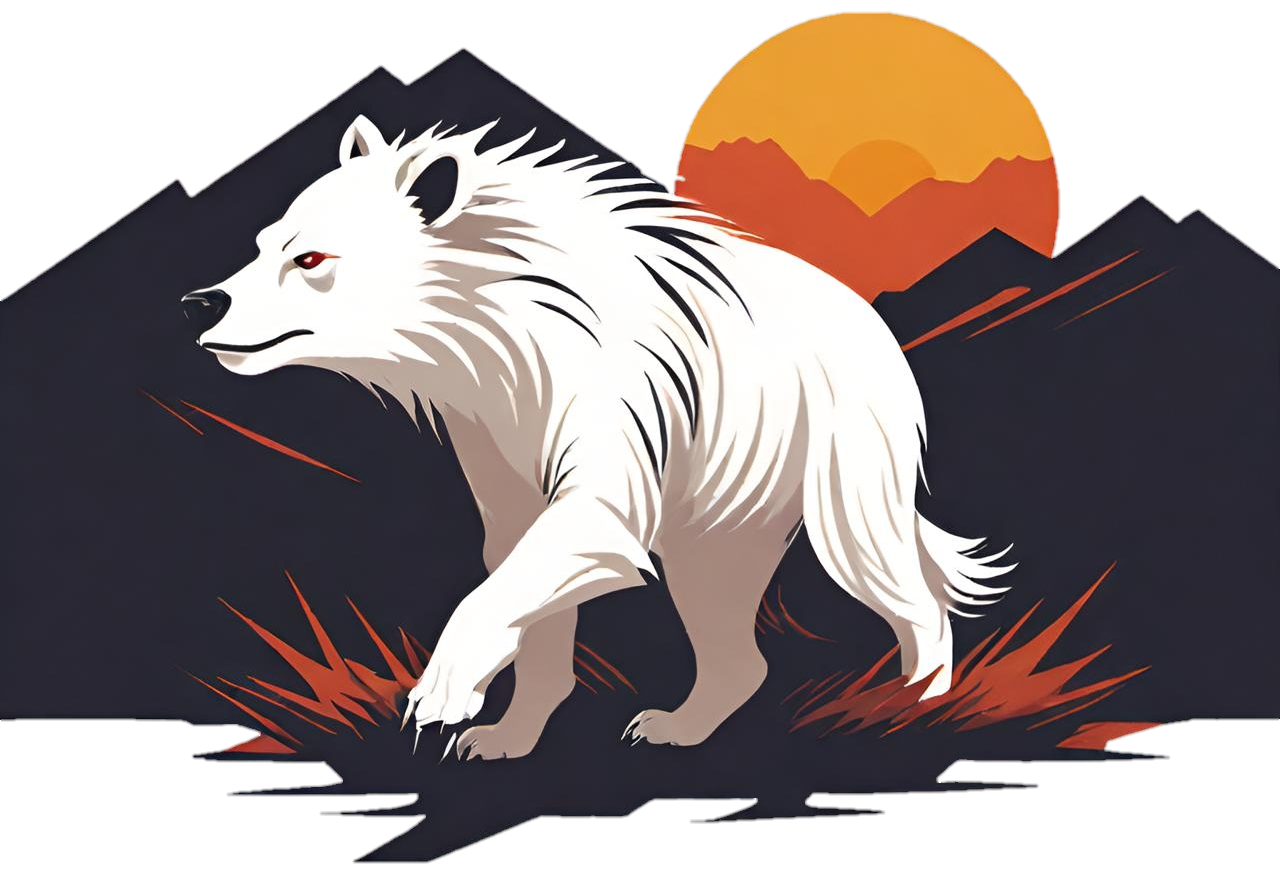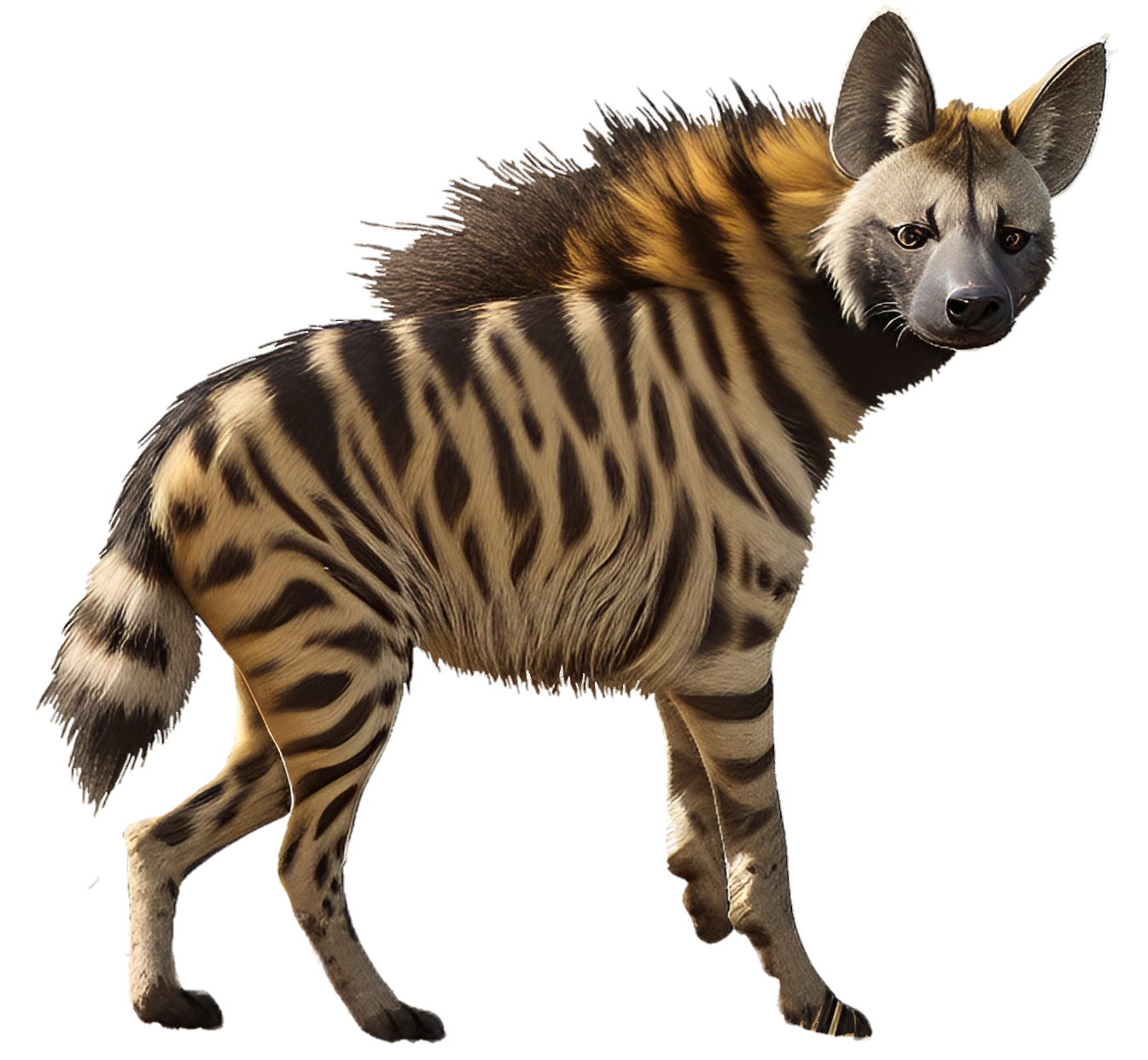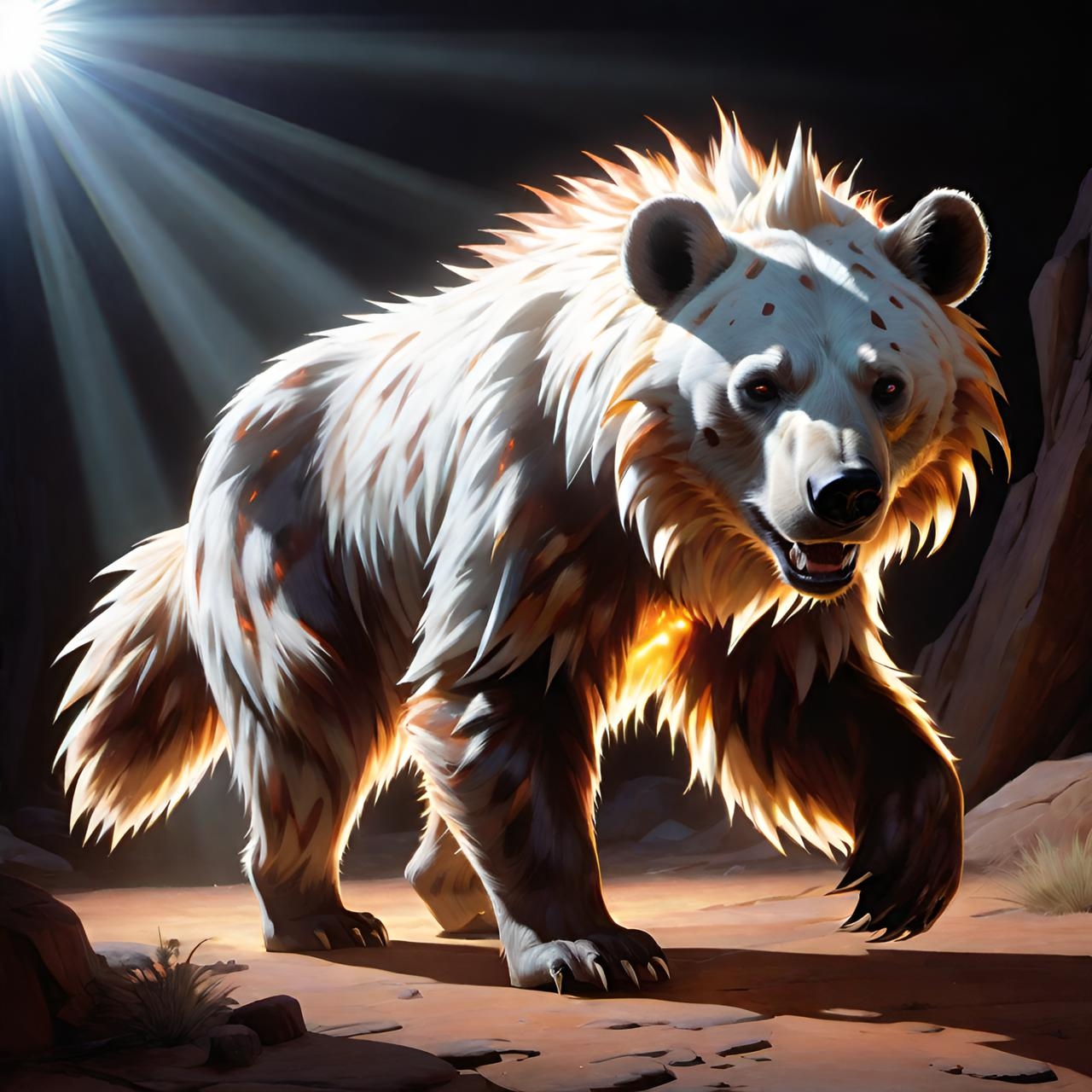Idraren Bear
There are rumors of bears in northern Alkelbulan but, despite local claims and sightings, most outsiders believe them an urban myth! Regional names for this bear include chimisit, duba, kerit and ngoloko, purported to reside in Idraren Draren. Possessing Maralith's Form and strong solar magic, these bears can manifest physical features of a Manid Hyena in their magic form. Incredibly reclusive, they are strictly nocturnal and only hunt on moonless nights. Their individual territories span large swaths of mountain forests, seeming spectral and ghostlike with their long white fur in the night.
|
First AbilityMaralith's Form (Manid Hyena) Thanks to Maralith Form, the magic form of the Idraren bear has features of a Manid Hyena incorporated into it. Idraren Bears usually gain the coat, mane and head of a hynea but exact features differ by individual.
Second AbilityRithaldis' Aura Those with Rithaldis's Aura are able to generate or summon radiant energy whether this is sunlight, solar plasma or ionizing radiation. These energies disappear after the caster ends the effect or loses concentration and the caster is immune to damage from radiant energy, natural or magical. That includes the radiation in their natural habitats! Rithaldis' Form Idraren bears with Rithaldis' Form can convert parts of their body into a kind of radiant energy (photons, plasma, sunlight, ionizing radiation) or has these incorporated into their form. Most Idraren Bear can convert their long fur, their claws or their teeth into radiant energy. What they can convert differs by individual. They are also immune to damage from radiant enery, natural or magical. |
Anatomy |
Compared to other species of bear, Idraren bears are stouter and thicker-bodied but their muzzles and claws are shorter. Yet the most notable difference is their thick fur which can grow to 4-5 inches long! In their magic form, idraren bear gain the bristly mane of a manid hyena, running down their back but also along the sides of its head. Some may even gain the long tail or slanted back of a hynea while others take on the powerful jaws and canine-like face instead.
|
Habitat |
Idraren bears are endemic to the Idraren Draren mountains in the Shamsi Desert, particularly in Libu and Marrakesh. They might also reside further south in Emi Toubou, Ayar Massif and Ahaggar Highlands. They thrive in the montane forests of Shamsi, far more temperate and verdant than the arid deserts skirting their mountains. Some may wander into shrublands and mountain steppes in search of food. Simultaneously, they are cut off and isolated from other species of bear thanks to these unforgiving deserts. |
Diet |
While the Idraren bear is omniverous, the bulk of their diet comes from roots, acorns and nuts! When they do consume meat, they scavenge for carrion or hunt small mammals opportunistically--especially when their favorite foods are scarce. They rely heavily on the excellent smell and jaw strength of their hyena features which are capable of crushing thick bones, consuming parts of carrion unavailable to other species. The Idraren bear is the apex predator of Idraren Draren despite only actively hunting when there is no moonlight, competing only with Hadje Sabertooth. In fact, they are timid, avoiding human settlements whenever possible. Only those who are starving might wander into villages in order to pilfer trash, prey on helpless cattle and dig up cadavers in graveyards.
|
Life Cycle |
Mating season for these bears is in spring, May to July. While there is usually a dominant male in a region, overlapping with the territories of females, he does not have sole rights to mate with them. Females will mate with several different males, their cubs often having different fathers! Having a slow reproductive cycle, mothers gestate through the winter while she hibernates, giving birth in a den lined with leaves. She will give birth to 2-3 hairless, toothless and blind cubs and provide milk up until spring or even summer. Cubs follow after their mother as she patrols her territory and they will stay with her until they are 2-4 years old, learning everything from how to scavenge, forage, hunt and defend themselves. Cubs frequently play with each other, rolling down snowy mountains and wrestling. Outside of mating and rearing cubs, these bears are solitary and territorial, claiming several hundred square miles for themselves. |












Comments